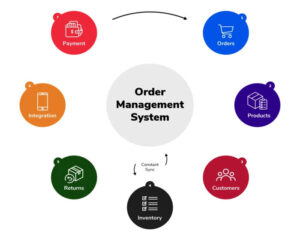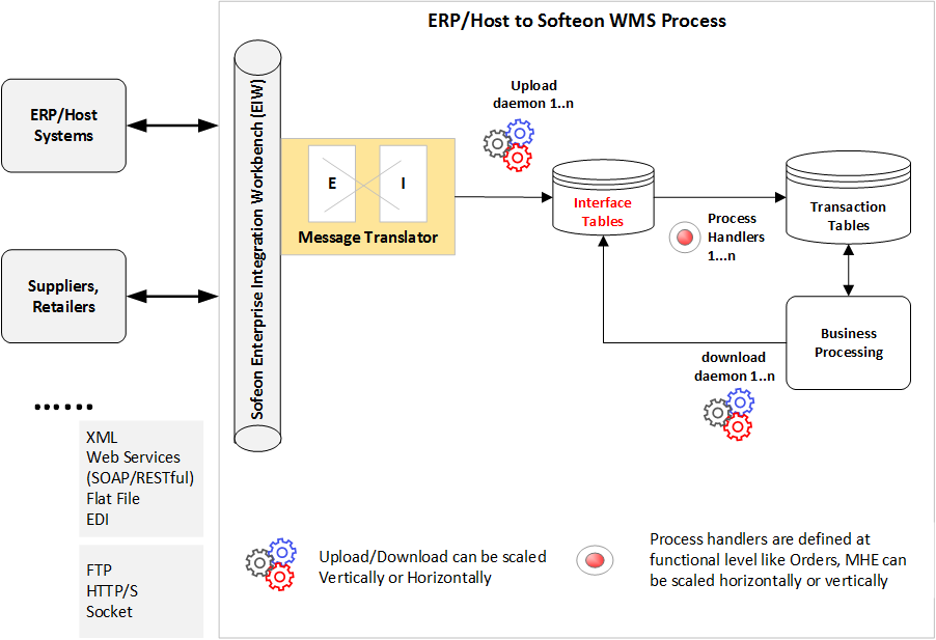Typical WMS Integrations
Having worked in the integration space for quite a while, I ended up working on projects for the retail and wholesale industries. Invariably, one of the key systems involves in warehouse management systems or WMS. While each customer was usually a segment or a subset of a broader reference integration roadmap, I thought it might be worthwhile trying to compile a super-set of what systems you can (or should) possibly integrate with a WMS.
Order Management Systems (OMS)
ECommerce systems, ERP modules, and dedicated OMSs all act as source systems or systems of reference in various scenarios and the WMS needs to be made aware of these orders for fulfillment.

CRM
Customer relationship systems are usually used by call center and customer-facing teams to look at order history, Shipping information, and engagement history. WMS usually need to feed into CRMs for them to be able to send out email notifications about product status to customers.
Customs Management System
One of my existing clients is a customs maintenance company. As sets of orders ships across borders, the system takes in invoices and ASNs and triggers the requisite customs documentation based on the product catalog (and metadata around that). The customs management process can be very sophisticated and usually is not includes in the scope of most WMS products. If you are shipping across borders a lot (this is one to consider).
Content Management Systems
If you have a product catalog that changes frequently or is one of those things that the marketing team controls tightly, they are likely using a content management system like Sharepoint, Gartner, or the like. These provide easy access to marketing people in uncomplicated ways to update the product catalog and metadata around that. Invariably, this needs to sync back to the WMS (amongst other systems).

ERP
ERPs are quite the beasts and sometimes include functionality from some of the other systems mentioned above. These are almost invariably connected to WMS systems and typically provide functionality like
- SOP auto-invoicing
- Support for manufacturing
- Integrated EDI into SOP including the world’s largest library of trading partner compliance labels and data exchanges
- Automated EDI/ASN data collection as part of the outbound order fulfillment process
- ASN communication with a trading partner
- Automated customer-specific label and pack slip printing for EDI and drop-ship customers
- Enforced routing instructions for pre-paid and collect shipments
- Optimizing receiving processes through the use of barcodes
- Employee performance reporting
- Integrated quality assurance
EDI
External partners (especially in the case of wholesalers) hooks up to the WMS for shipment notifications (ASNs), POs, SOs, Inventory Sync, etc. In some cases, these can also span payment-related interactions. EDI formats can be quite varied and complex sending over a range of protocols or gateways that are a thing in itself. Procure-to-Pay or Order-to-Cash solutions help optimize this significantly. In most cases, the source and sink of EDI interchanges from partners is the WMS
Shipping Optimization tools
Tools that allow optimization of what shipping service to use at any given time for any given package or product, Pro ship e.g., require integration with shipment modules within the WMS. They usually need order information, product, packaging, weight, etc. to run rate-shopping and prioritization algorithms.
Tax Calculation tools
I had a customer that used to sell books online. Apparently, the tax laws for selling books online vary vastly by state. So they needed a system (in this case ADP Taxware) to manage the taxes for them. This system required input around the order information along with a lot of tax and corporate data (that the accountants managed) to determine the tax applicable for a certain product. Most of the connectivity was done with their order management system however for some of the drop-ship scenarios, they had to hook that up too.
Existing Custom
While not a category in itself, I see these very very often. Customers find their existing systems (any of the above) to be missing a feature or two and end up developing small modules, which turn into applications or systems over years. One customer I worked with had a system that had a very peculiar need around picking priorities – that saved them a lot of time and were unwilling to let their WMS dictate how that ‘should’ be done. Eventually, that custom module took the shape of code and screens that needed to integrates into a mainstream WMS that did the rest of the bits.
If you have done other integrations that I might have missed, please do share them in the comments below, I’d love to add them to my collection.







